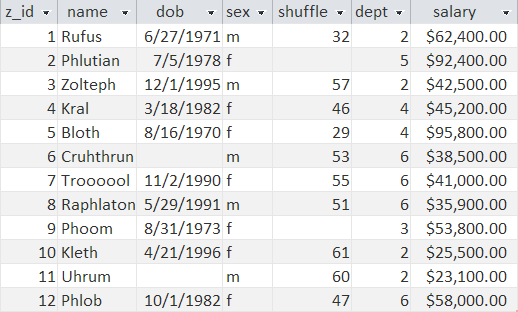This course helps you learn how to make simple web apps. We'll look at basic business functions, like:
- Finding products.
- Placing an order.
- Applying for a job.
- Finding out who to contact.
Companies in real estate, manufacturing, financial services, recruiting, education… they all want apps that do these types of things.
By the end of the course, you'll know what the pieces of a typical web app are, and how they connect with each other. You'll have built a few apps yourself.

First, we'll focus on one task: CRUD. That is, creating, reading, updating, and deleting records. A record is some data about one thing, like a product, or a customer. A record can be a row in a database table, like this one.

Each record has a unique id, then a bunch of fields.
CRUD apps are everywhere in business. If you can make a CRUD app, you have a useful skill.


There are so many different technologies, that one person cannot learn them all. Fortunately, you don't need to. Each company chooses its own tech. This course gives you a solid base you can build on, to learn the tech that your particular company uses.
Here's what you'll learn:
- How web browsers and servers work together. Just the basics.
- A little HTML, the language used to tell browsers what data to show. There are almost 100 HTML tags. You'll learn about a dozen.
- A little CSS, the language used to tell browsers what the data should look like. There are about 350 CSS properties; you can see a list. You'll learn about 15.
- A little JavaScript, about 10 statements.
- A simple database called TaffyDB.
This may not sound like much, but it's enough to make basic apps.
You should allocate around 8 hours per week for the course. Sometimes it will take you less time, sometimes more.
